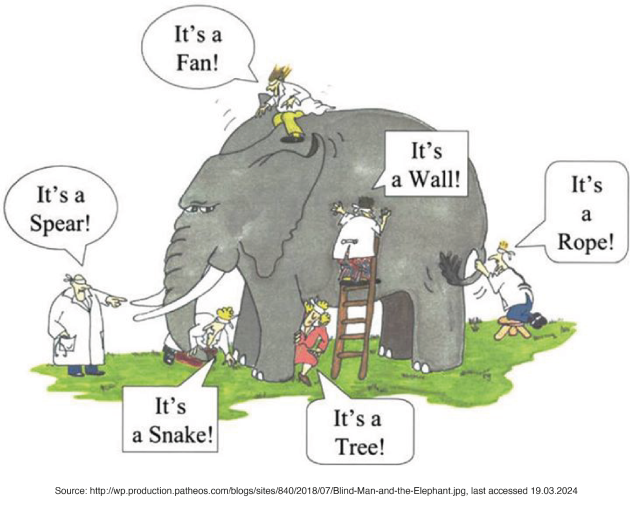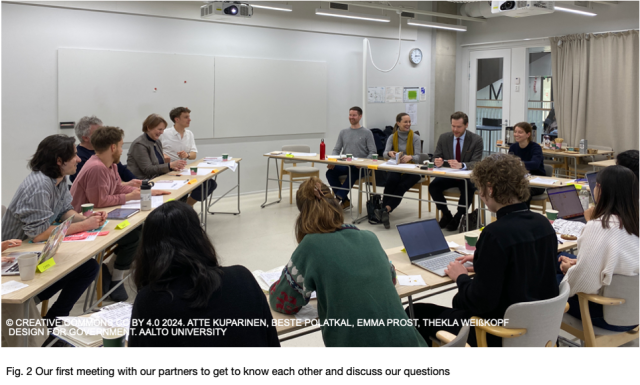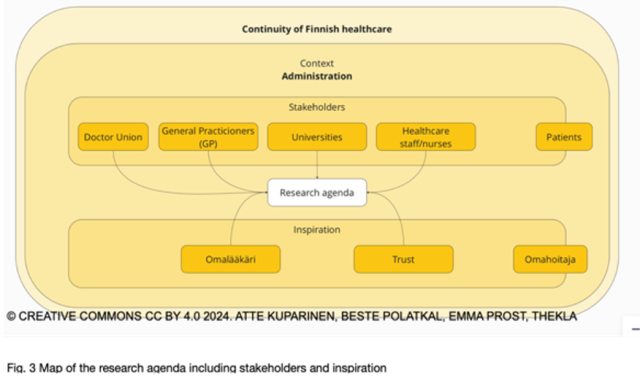A quick note in advance: A large part of this blog consists of questions. As we are taking the first steps in our project, we find ourselves immersed in them: Questions upon questions and answers that raise new questions.
In this first part, we try to familiarize ourselves with the topic, meet our partners for the first time, and discuss our priorities as well as our direction in research.
This blog post reports on our work in progress within the DFG course 2024. The post is written by Group 2A, dealing with the Kela and the Ministry of Social Affairs and Healths brief on continuity of care. The Group includes Atte Kuparinen and Emma Prost, Collaborative and industrial design as well as Beste Polatkal and Thekla Weißkopf, Creative Sustainability
Written by: Thekla Weißkopf
About three weeks ago, we all sat together in the Design for Government classroom for the first time. Our tired eyes were glued to the screen as we eagerly waited for the presentation slide to finally turn over and tell us what topics we would be working on for the next 12 weeks: continuity of care or biodiversity.
For our group: Continuity of care it is!
To begin and make sure we are all standing at the same starting line, we had (quite) some team meetings, consisting of ever-growing Miro boards, and long discussions with liters of coffee. For us it was important to make sure that we all understood the elephant (Figure 1) as a whole and not just grasp individual parts and draw the wrong conclusions.

We tried to get a grasp of the finnish healthcare system, understand different perspectives and see connections in order to find out where we could intervene, where the leverage points are[1]. Yet, every answer we had, raised a new question: What does continuity of care actually mean? What does it mean to us and what does it mean to our partners? Which stakeholders and perspectives are relevant and how do we grasp a complex system like public healthcare? What is our role in this?
Gradually we became aware of the difficulty this project: we are working with a system that needs to quickly respond to individual needs. Additionally, primary care is the first point of contact for patients and therefore carries great responsibility.
Time to meet our partners
The first time we got to meet our partners is in the roundtable discussion:
We came prepared with our questions, which we divided into four categories and sorted by urgency: Continuity of Care, Brief Specifics, Private Health Care, and Finances. Among our guests, we were fortunate to have many different perspectives and, thus, a diverse insight into the world of the Finnish healthcare system. Everyone was equipped with an A3 sheet of paper and pens to take notes, and within two hours, we got a lot of answers to our questions. At the same time, new questions arose like: What do we mean when we talk about incentives? How do doctors want to work? How can the public and private sectors work together to serve different populations with different needs? In the end, it was clear that the most important factor in continuity of care is the doctor-patient relationship. With eliminating the random assignment of patients to doctors and integrating a continuous relationship between the two, personalized and considerate care can be provided.

Personally…
I have a very different design background (fashion design and tailoring). In my previous design work, I would have my own creative act, independent of others, just looking inside myself and turning inspiration into design. For me, this is the first time I actively looked around, considering the stakeholders and emphasizing with their experiences[2] as well as considering the systematic issues related to our project. I’m learning how important it is to communicate openly, to choose the right words, and to define terms we agree on. At the same time, I hope to support my group with my experience with practice- orientated approaches and my ability to create narratives.
Let´s get to work!
After the roundtable discussion, my group first decided to look into the perspective of doctors within the healthcare system. We decided to figure out why there is a lack of general practitioners within the public sector in Finland in the first place. We started our research on exploring healthcare systems in other countries like Turkey or Norway as well as the history of Finnish healthcare. Additionally, we planned to gather data on how trust is built and look into how opinions and public images are formed. From personal experiences and the roundtable discussion, we gathered that the public image of the general practitioner is often not as respected as specialists. The same goes for other medical staff like nurses who often don´t feel valued in the work they do. Therefore, we wondered how that image might be changed and how these jobs can be more appreciated within society. We wanted to ask young doctors when and why they decided to go into the private sector. What incentives might be needed for doctors to stay in the public sector? What should the job of a general practitioner look like in the future? Should we maybe change the way doctors are educated?

Where do we go now ?
During our research, our focus shifted to a more administrative point of view. Instead of only focusing on doctors, we are now interested in how to build a medical workforce and environment that enables continuity of care. In our opinion a crucial role for this is trust. Trust between doctors and nurses, trust between patients and doctors as well as trust between people and systems. With this we hope to identify the levers that make sure that the people who take care of our wellbeing also feel well and supported in their work.
If you want to discover insights and perspectives in the healthcare system, join us on our journey over the next few weeks as we meet people from different parts of the healthcare system and learn from their experiences.
References:
Helsingin Sanomat, Vieraskynä, 14.1.2022, https://www.hs.fi/mielipide/art-2000008531708.html, last access 14.03.2024
http://wp.production.patheos.com/blogs/sites/840/2018/07/Blind-Man-and-the-Elephant.jpg, last access 18.03.2024
Meadows Donella, leverage points, places to intervene in a system, The sustainability institute, 1999
Roger Martin on leveraging design in business, https://www.youtube.com/watch?v=NR5A4LVjxS0&t=1457s, last access 13.03.2024
The DfG course runs for 14 weeks each spring – the 2024 course has now started and runs from 26 Feb to 29 May. It’s an advanced studio course in which students work in multidisciplinary teams to address project briefs commissioned by governmental ministries in Finland. The course proceeds through the spring as a series of teaching modules in which various research and design methods are applied to address the project briefs. Blog posts are written by student groups, in which they share news, experiences and insights from within the course activities and their project development. More information here about the DfG 2024 project briefs. Hold the date for the public finale on Wednesday 29 May!

